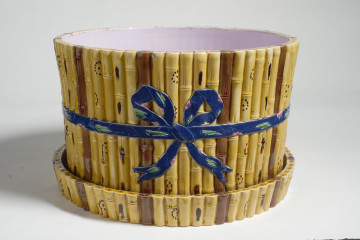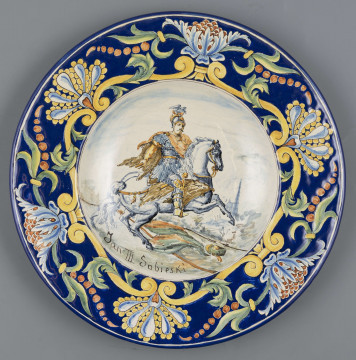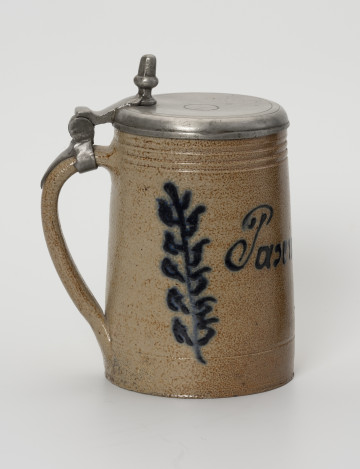
Cover
XIX/XX wiek, 2nd half of the 19th century
Castle Museum in Łańcut
Part of the collection: Majolica from Nieborów
The maiolica of Nieborów belongs to the most interesting examples of 19th-century European ceramics. It referred to the best Italian and French patterns. In 19th-century Polish art, tendencies to refer to the past were often tinged with patriotic overtones, and such motifs can be found in the Nieborów products. The inspiration of mythological themes was the second important element of production.
The artistic workshop of Prince Michał Piotr Radziwiłł in Nieborów employed specialists, local craftsmen and artists, talented representatives of the impoverished landed gentry and inhabitants of the surrounding villages. Among the decorators were students of the Warsaw Drawing Class, run by Wojciech Gerson in 1871-1896. Such artists as Józef Chełmoński, Józef Pankiewicz, Władysław Podkowiński or Leon Wyczółkowski were educated there. The decoration of ceramics was also created by students of Warsaw porcelain painters. It contributed to the individual, unique decorations. The manufactory in Nieborów was run by Stanisław Thiele, who studied in France and gained experience in Antoine Montagnon's factory in Nevers.
The pitcher on a leg from the collection of the National Museum, decorated with a motif of cupids against the landscape background, was inspired by a specific example of French maiolica made in Nevers and still found in the collection in Nieborów (inv. no. NB 1837). The high quality of the drawing, the careful selection of delicate pastel colours and the dynamic composition determine the artistic and display value of the work.
Maiolica with colourful figural motifs, freely sketched genre scenes, pleased the eye, but was often subjected to severe criticism. Polemics on its artistic value and the originality of the idea can be found in the press of the time. Bolesław Prus was a firm opponent of it, finding the inspiration of German ceramics in the forms of vessels, and postulated the return to the native, even folk patterns. On the other hand, Wojciech Gerson appreciated Nieborów artists’ efforts and wrote: "[...] the Nieborów factory could [...] be that seedling of good taste, a sower of native seed, nurtured in its native soil".
Magdalena Norkowska
Author / creator
Dimensions
cały obiekt: width: 30 cm
Object type
dish
Technique
ceramic technique
Material
faience
Creation time / dating
Creation / finding place
Owner
The National Museum in Lublin
Identification number
Location / status

XIX/XX wiek, 2nd half of the 19th century
Castle Museum in Łańcut

1882 — 1885
National Museum in Lublin

1840 — 1860
National Museum in Szczecin
DISCOVER this TOPIC
National Museum in Lublin
DISCOVER this PATH
Educational path